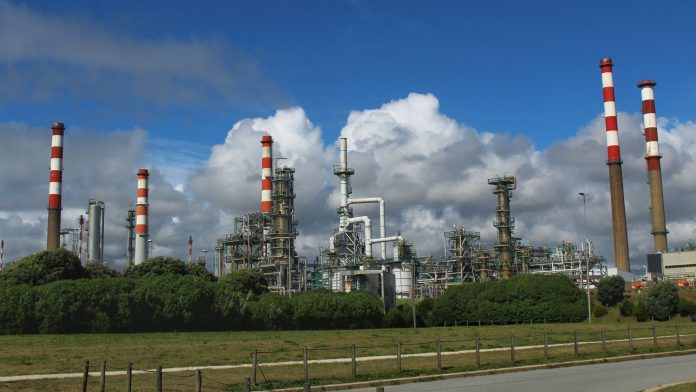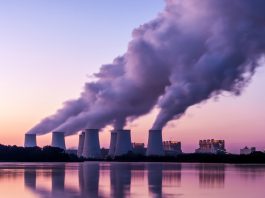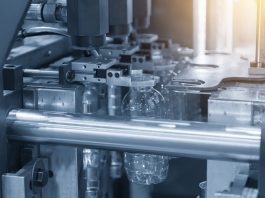The European project, EMB3Rs, is discovering new ways to achieve industrial waste heat recovery in Portugal to raise energy efficiency, cut carbon emissions and end fuel poverty.
Lisbon’s Parque das Nações is home to the only large-scale District Heat Cold (DHC) network in Portugal. Operated by Climaespaço, the DHC network comprises a 22.5km underground network of pipes that provides hot and chilled water, for heating and cooling, to some 3,500 users. Currently, the system uses natural gas as its primary energy source, providing heat, cold and electricity via a trigeneration power unit. However, this is set to change as waste heat recovery in Portugal could instead increase energy efficiency and sustainability.
Increasing waste heat recovery in Portugal
“From an environmental and economic point of view, it’s no longer sustainable to keep using natural gas as our only source of energy,” explained João Castanheira, Chief Executive of Climaespaço. “So we have been thinking carefully about our future and how to make our energy transition.”
As part of this, Climaespaço joined the European research project, EMB3Rs (User-driven Energy-Matching & Business Prospection Tool for Industrial Excess Heat/Cold Reduction, Recovery and Redistribution), designed to investigate the recycling of industrial excess heat and cold. Here, a platform has been developed to model how waste energy from factories could be reused in nearby industrial processes, DHC, and even residential locations.
As part of the project, a number of stakeholders from across Europe have been providing data to EMB3Rs, and testing the platform to assess the potential for employing waste heat recovery in their businesses. Ultimately, the platform intends to ‘match’ potential energy providers and users.
Obtaining new energy sources: Climaespaço joins the EMB3Rs project
“We know of some cases where there are surplus heat sources yet nearby buildings are burning gas for heating – this does not make sense and we want to use EMBERs to analyse these potential [energy-matching] opportunities,” Castanheira said. “We believe there is huge potential for district heating and cooling across Portugal, and as a company with many DHC systems we want to develop – the platform can help.”
But while Climaespaço has joined the EMB3Rs project to search for new energy sources, other project partners hope to find ways to share surplus energy. Portugal’s largest cement manufacturer, CIMPOR-Indústria de Cimentos, has been working with global engineering consultancy Emerson, to provide EMB3Rs with data on excess energy within its cement production plant at Souselas.
Industrial heat recovery to raise energy efficiency
Paulo Rocha, Director of Innovation and Sustainability at CIMPOR, believes that waste heat is already recovered from gases released by the factory’s kiln for drying the residue-derived fuels used during operations. However, the ten-year payback time on future investments to exploit further heat recovery from other sources takes too long.
Given this, Rocha hopes that EMB3Rs will provide guidance on unexplored opportunities to affordably recapture heat at Souselas. This energy could potentially be integrated into the factory’s existing or future manufacturing processes to raise energy efficiency and cut carbon dioxide emissions. It could also be transferred to nearby industries including hospitals, ceramic facilities, rice producers, and a cattle abattoir.
“I think the EMB3Rs tool can push different actors together to think about new solutions,” said Rocha. “It could also be important to the future industry – if a factory is being built, the tool could provide information on nearby energy sources that could supply megawatts of heat.”
Intensive energy consumption management system
It is this flow of energy from provider to user that Ana Cardoso, Project Manager at Portuguese Energy Agency, ADENE, hopes to promote in Portugal. ADENE has access to information via Portugal’s energy certification system for buildings, and intensive energy consumption management system for industries, and joined EMB3Rs as a ‘super-user’ to help identify clusters of energy sources and sinks across the nation.
As Cardoso points out, the EMB3Rs platform is being applied to the industrialised Aveiro region, with the data being used to help match excess energy to potential users at this macro-level. If success ensues, information from other regions could be loaded onto EMB3Rs to link energy demand and surpluses further afield.
“The synergies we identify will point to energy efficiency solutions and provide insight on how to reduce excess heat in industry,” she concluded. “This is important – the Portugal climate is not cold, but energy poverty is an issue during winter – maybe EMB3Rs can help to minimise this.”









